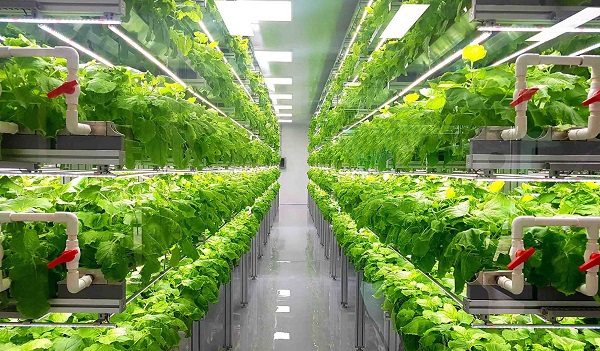Vertical Farming: The Future of Sustainable Agriculture

Vertical farming is a revolutionary approach in agriculture, combining modern technology with sustainable practices. This article explores the technology of vertical farming, its applications, advantages and disadvantages, its potential in addressing agricultural challenges, and the overall feasibility and future potential of this innovative farming method.
The Technology and Origins of Vertical Farming
Vertical farming is a method of growing crops in vertically stacked layers, often incorporating controlled-environment agriculture, which optimizes plant growth, and soilless farming techniques like hydroponics, aeroponics, or aquaponics. This innovative approach to farming emerged in the early 2000s as a response to the growing need for sustainable agricultural practices in the face of limited arable land and increasing urbanization.
The technology behind vertical farming allows for the creation of a controlled environment that optimizes growing conditions and maximizes space. By using artificial lighting, climate control systems, and minimal water, vertical farms can produce crops year-round, independent of weather conditions and geographical constraints.
Applications and Users of Vertical Farming
Vertical farming is primarily used in urban areas where space is limited and the demand for fresh produce is high. It’s particularly beneficial in densely populated cities where traditional farming is not viable. Urban restaurants, supermarkets, and individual consumers are increasingly sourcing their produce from vertical farms to ensure a supply of fresh, local vegetables.
Additionally, vertical farming is an attractive option for countries with harsh climates or inadequate farming land. It allows for local food production in regions where importing fresh produce is costly or logistically challenging.
Entrepreneurs and environmentalists are also drawn to vertical farming for its potential to create sustainable and local food systems. It presents an opportunity to reduce transportation costs and carbon footprint associated with traditional agriculture.
Pros and Cons of Vertical Farming
One of the main advantages of vertical farming is its efficient use of space and resources. It can produce significantly more per square foot than traditional farming methods. The controlled environment also means fewer pests and diseases, reducing the need for pesticides and herbicides.
However, vertical farming is not without its challenges. The initial setup cost can be high, and the reliance on technology means that energy costs can be substantial. Finding the right balance between energy use and sustainability is crucial.
There is also the question of crop variety. While vertical farming is excellent for leafy greens and herbs, it is currently less suited for crops like grains or root vegetables, which require more space and different growing conditions.

Impact on Harvesting, Planting Area, and Hunger Problems
Vertical farming has the potential to revolutionize how we approach issues of food security and land use. By enabling efficient food production in small spaces, it can significantly reduce the need for vast areas of arable land, thereby mitigating deforestation and habitat destruction.
Moreover, vertical farming could play a crucial role in addressing global hunger. By producing food in urban areas, it reduces dependence on long supply chains, ensuring fresher and more accessible produce, even in food deserts and impoverished urban areas.
Feasibility and Future Potential of Vertical Farming
In conclusion, vertical farming presents a promising solution to many of today’s agricultural challenges. Its ability to produce food sustainably and efficiently makes it an appealing option for the future of agriculture, especially in the context of a growing global population and urbanization.
While there are challenges to be addressed, particularly in terms of energy use and crop diversity, the potential benefits in terms of sustainability, efficiency, and food security make vertical farming an exciting and viable path forward in the realm of modern agriculture.
